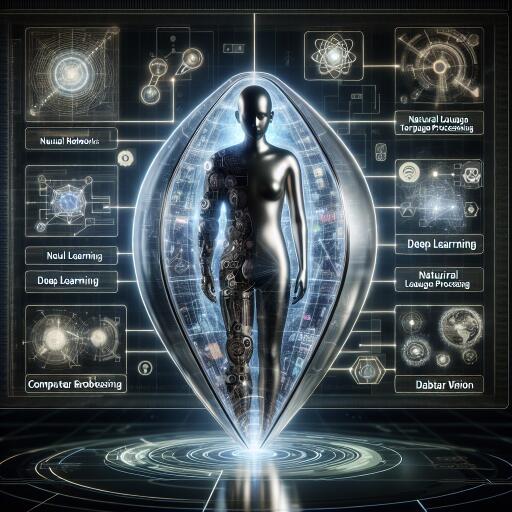Understanding AI: A Guide to 7 Essential Terms
Artificial Intelligence (AI) is moving at an unprecedented pace, transforming how we live, work, and interact with the world around us. To navigate this rapidly evolving field, it’s vital to familiarize yourself with the terminology defining the future of technology. Below, we explore seven pivotal AI terms that will keep you informed and ahead of the curve.
1. Artificial Intelligence (AI) vs. Artificial General Intelligence (AGI)
While AI is a broad term that refers to computer systems capable of performing tasks that typically require human intelligence, AGI is the zenith of AI research. AGI represents a future where machines exhibit cognitive abilities across a wide array of tasks, mirroring human intellect. Unlike current AI, which excels in specific domains, AGI would seamlessly integrate capabilities ranging from composing music to coding, embodying an all-encompassing form of intelligence akin to a science fiction scenario.
2. AI Hallucination
Ever received a confidently inaccurate response from an AI? That’s an AI hallucination. These instances occur when AI systems, like ChatGPT, produce convincing yet entirely fabricated information. While improvements in models have reduced such hallucinations, the phenomenon underscores the importance of critically evaluating AI-generated content. Always verify AI outputs, particularly when they seem too convincing or outlandish.
3. Neural Networks
Neural networks are at the heart of AI’s capability to mimic human intelligence. Inspired by the brain’s architecture, these networks comprise layers of nodes or “neurons” that process and relay information. This structure empowers AI to perform a diverse range of tasks, from image recognition to language translation. However, the complexity of these networks, especially in deep learning models, often makes their decision-making process opaque, raising challenges for transparency and interpretability.
4. Machine Learning vs. Deep Learning
Machine Learning (ML) and Deep Learning (DL) are two pillars of AI, with DL being a specialized subset of ML. ML enables computers to learn from and make decisions based on data, improving over time. Deep Learning, however, takes a more intricate approach by using layered neural networks. This allows DL to process vast amounts of data, driving advancements in fields such as image and speech recognition with minimal human supervision.
5. Natural Language Processing (NLP)
NLP bridges AI and human communication, enabling computers to understand, interpret, and produce human language. This technology fuels the effectiveness of chatbots, voice-activated assistants, and translation services. Through NLP, machines can now engage in tasks ranging from answering queries to synthesizing new content, making interactions with AI more natural and intuitive.
6. Transformer Models
Transformer models represent a breakthrough in NLP, introduced in the seminal paper “Attention Is All You Need.” These models excel in understanding context by analyzing entire sequences of data simultaneously, leveraging a mechanism known as “self-attention.” This allows for remarkably improved language comprehension and generation, powering some of the most advanced AI applications in text translation, summarization, and creation.
7. Large Language Models (LLMs)
LLMs, such as GPT (Generative Pre-trained Transformer), are advanced transformer models trained on extensive datasets. They exhibit remarkable abilities in generating coherent and contextually relevant text. Despite their prowess, LLMs face challenges related to ethical considerations and the propagation of misinformation, stemming from biases inherent in their training data.
The AI landscape is vast and ever-changing, but understanding these seven terms provides a solid foundation for navigating discussions about AI’s current capabilities and future potential. As AI continues to evolve, staying informed will empower you to engage with this transformative technology more critically and thoughtfully.
With each term offering a glimpse into the intricate world of artificial intelligence, we are reminded of the profound impact AI has on our daily lives and the importance of staying knowledgeable about the technological advances shaping our future.










